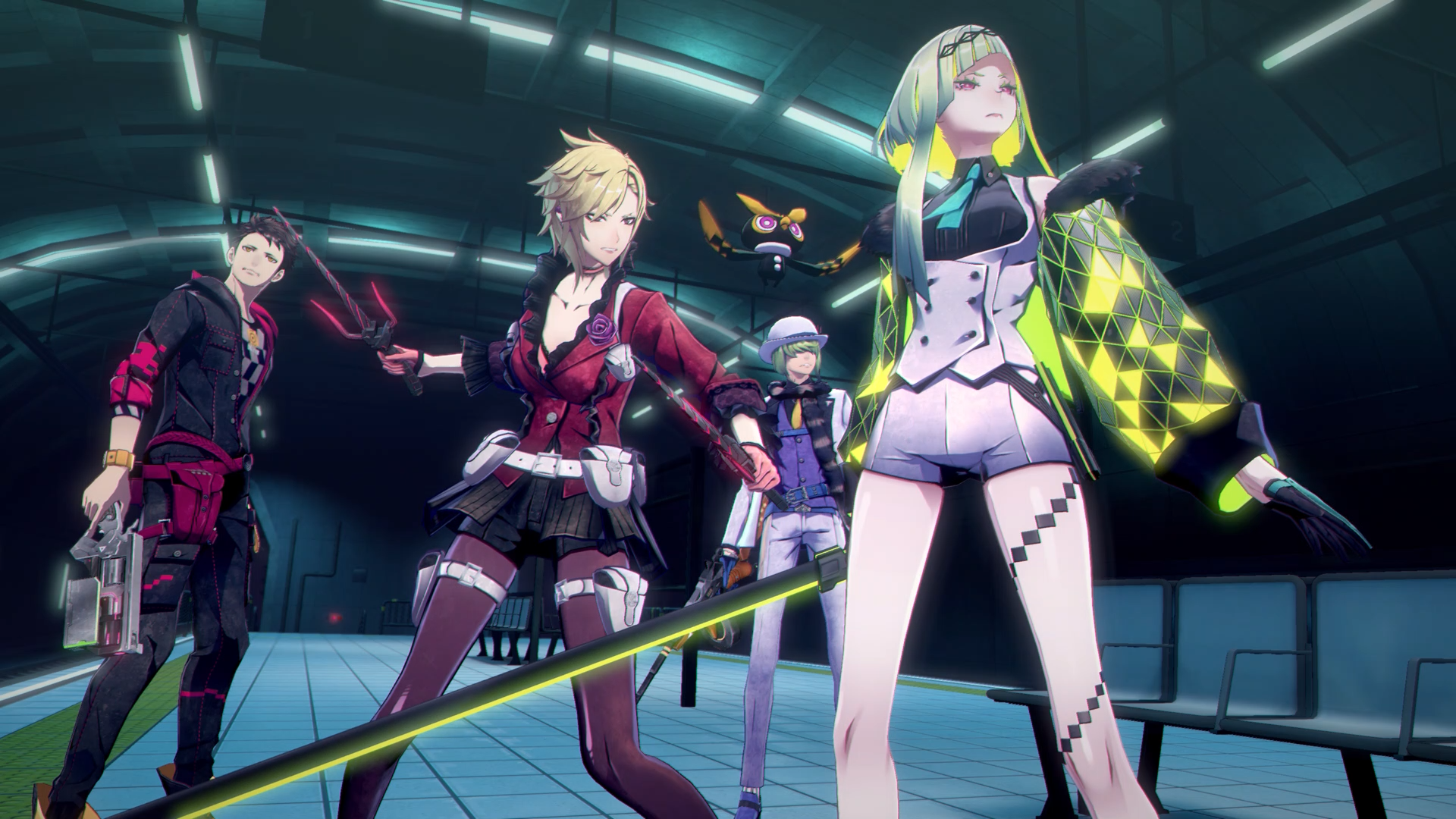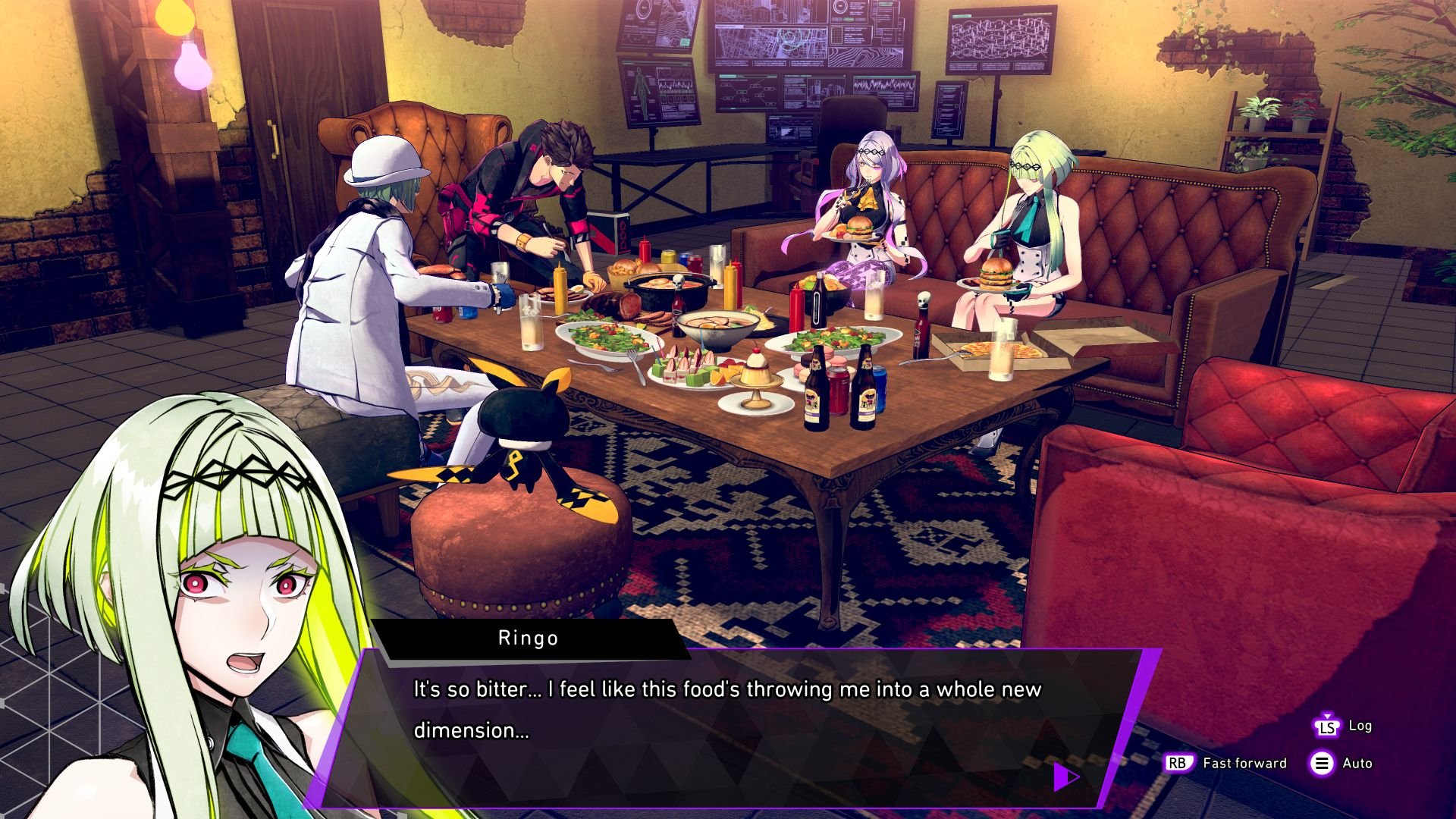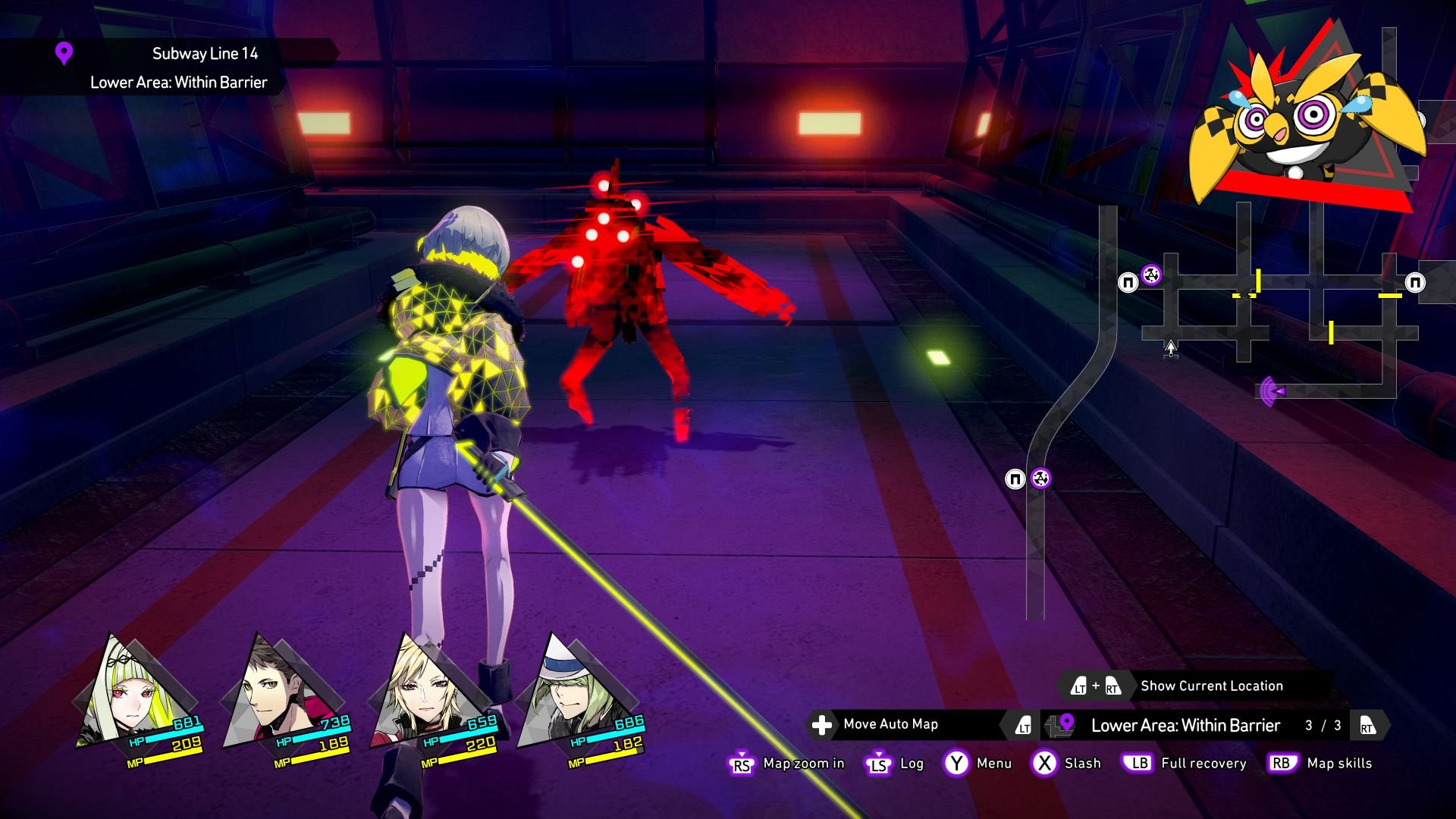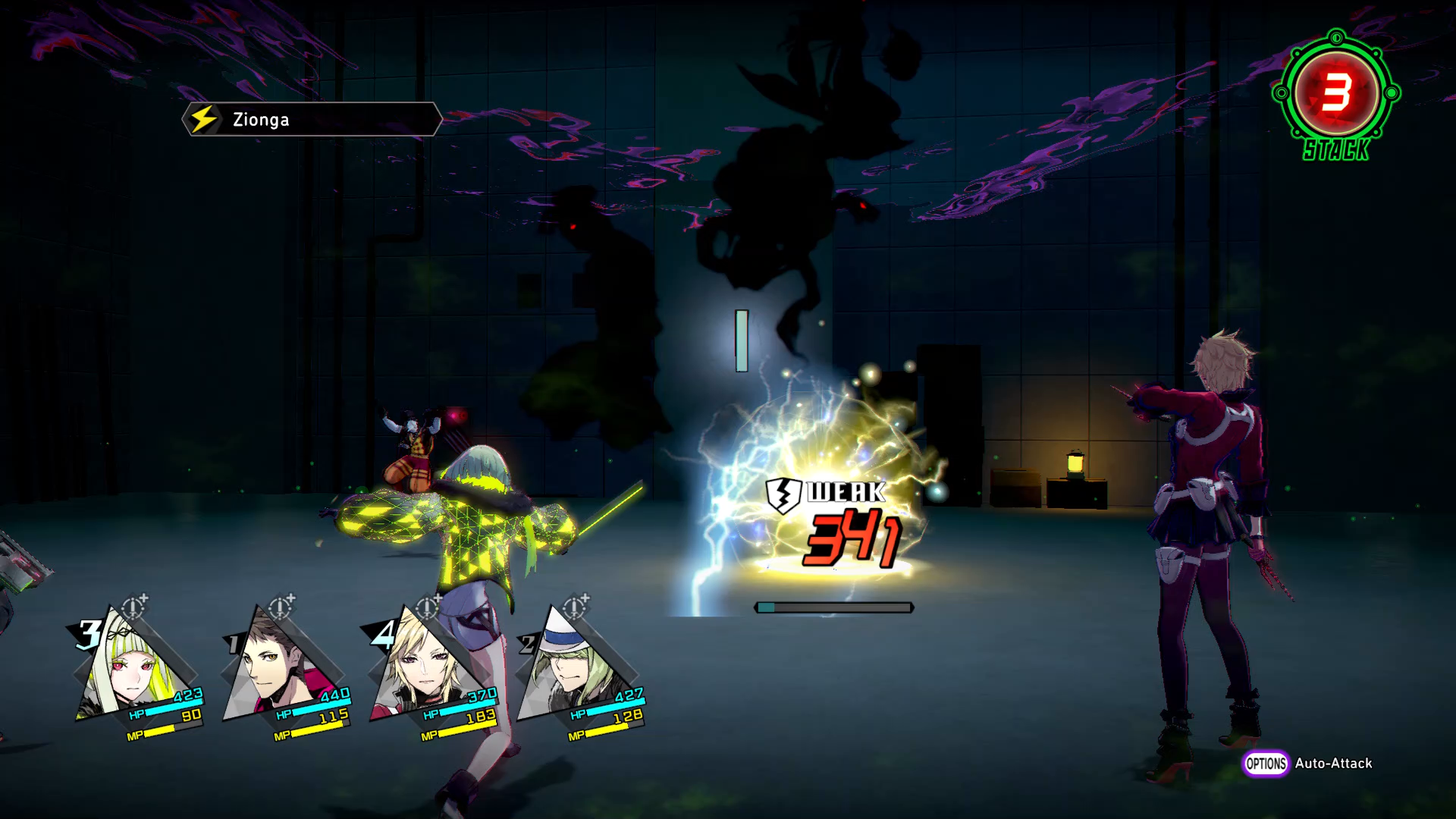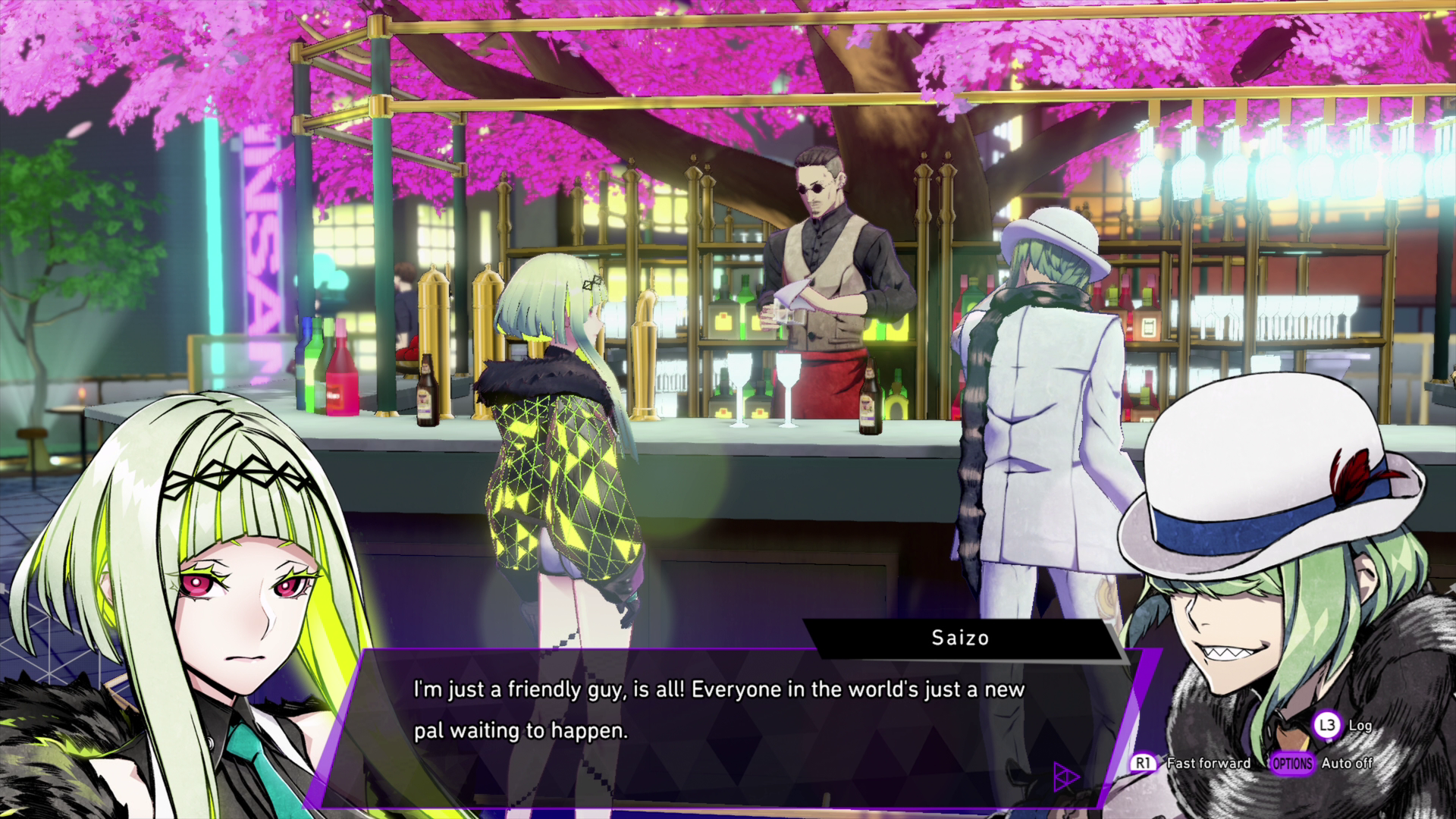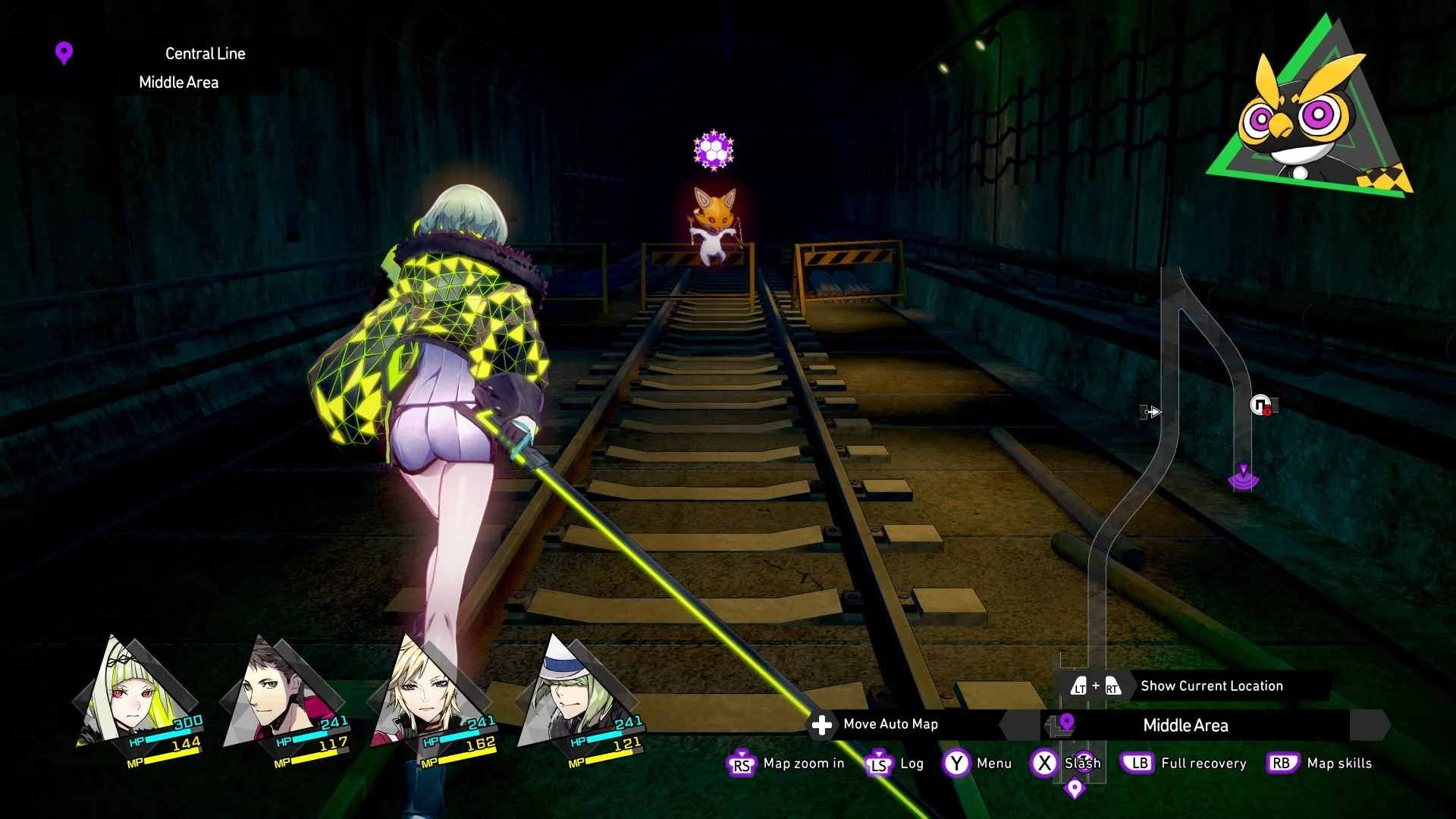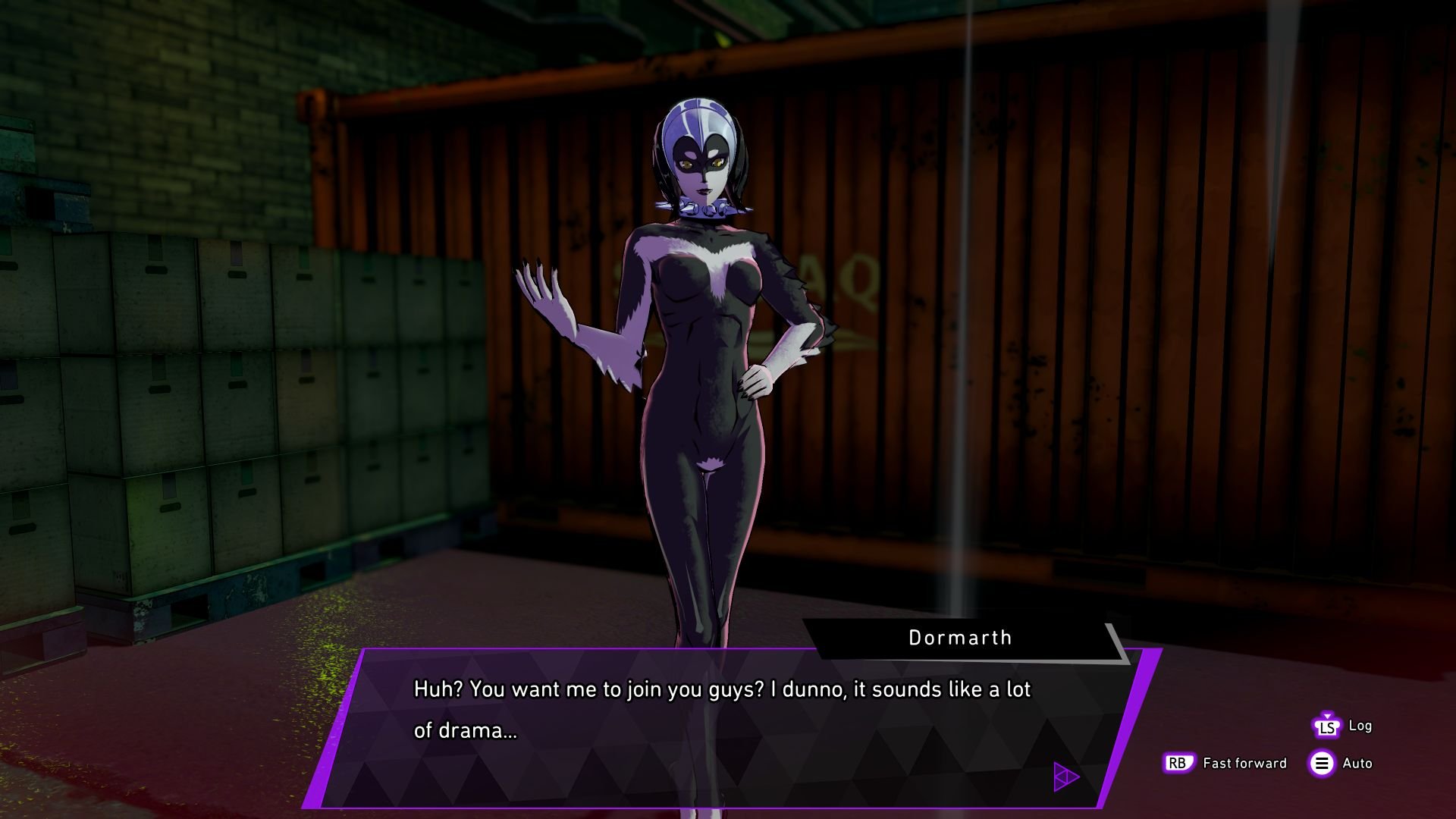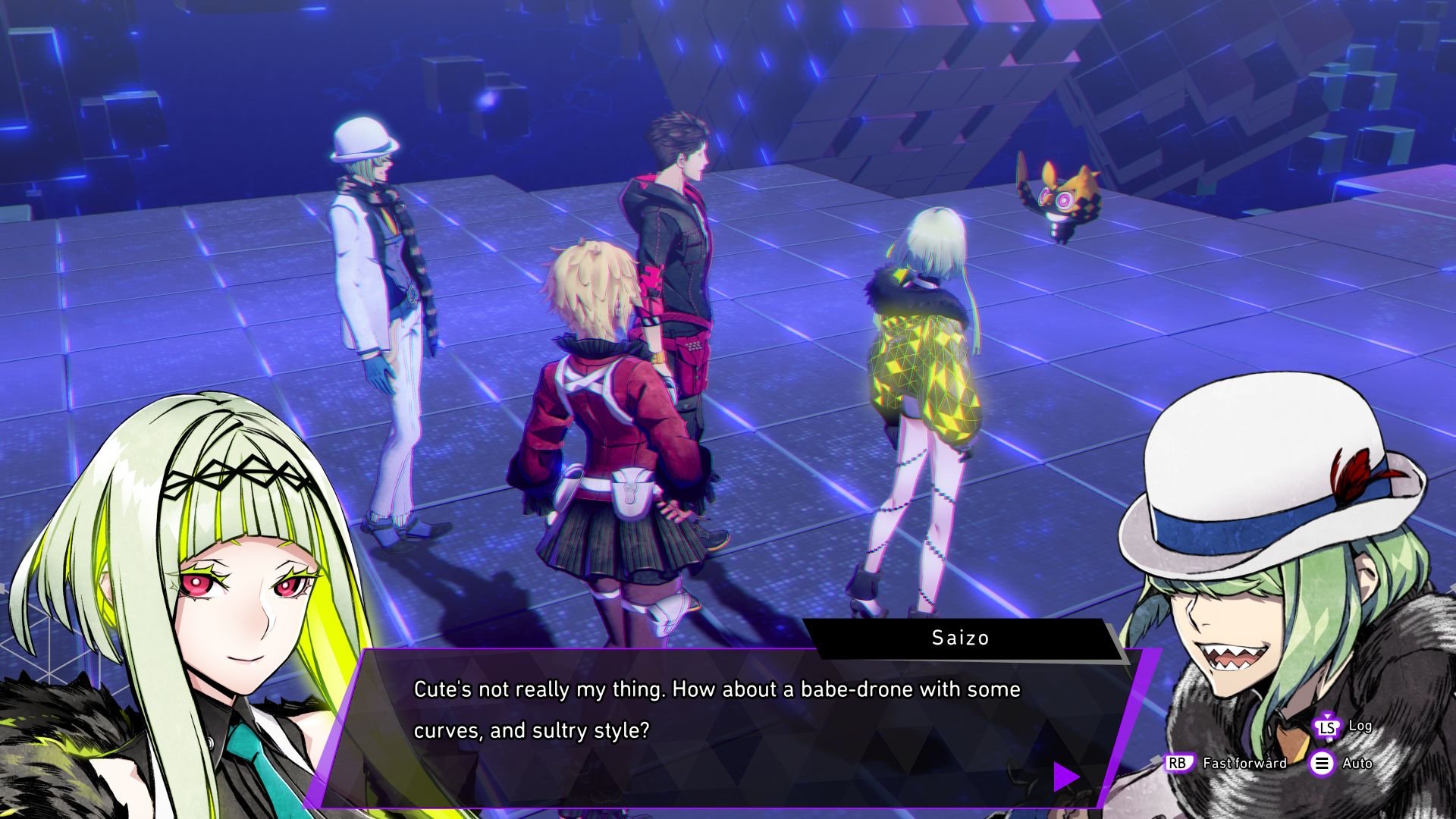And Ringo was her name-o.
While a spin-off of the Shin Megami Tensei series, Persona is likely the biggest and most popular game under the ATLUS banner, with both Persona 4 and 5 often being considered among the best JRPG’s out there. While there have been several other spin-offs under the Shin Megami Tensei label, Devil Summoner: Soul Hackers wasn’t one that many fans ever thought they would see a sequel to, especially after being absent from players for over a decade now. And yet while the branding is removed from the title, Soul Hackers 2 has finally arrived, offering an action-packed JRPG experience that feels more like Shin Megami Tensei-lite, for all the right reasons.
Soul Hackers 2 is a self-reliant story that doesn’t require the first game to bring you up to speed or introduce you to any of its mechanics, story, or world. There are some connections that fans of the franchise will discover across the game’s roughly 40-50 hour adventure, but they are surface level at best, largely a name here or there as well as where the overall adventure takes place.
If you are familiar with any aspect of the Shin Megami Tensei series, you’ll know that the world it takes place in is one where gifted humans can make contracts with demons and use them in battle, which, if you think about it, makes these games sound like a grown-up version of Demonic Pokemon. In Soul Hackers 2, this ability fuels the purpose of two groups; the Yatagarasu, and the Phantom Society. The Yatagarasu use their demonic summoning powers to protect humanity, whereas the Phantom Society is set on taking over the world, at any cost.
Watching from the sidelines is Aion, an AI that has a vision of the future; a glimpse of mankind’s destruction. To ensure this future doesn’t come to pass, they create two humanoid constructs in the form of Ringo and Figue. Aion shares this vision with the pair, tasking them with keeping two special individuals alive; each of who are found recently deceased as the newly born duo tracks them down. Ringo, who isn’t content with having the mission end in failure, uses a technique called Soul Hacking to bring one of them back alive, a young man named Arrow, who then joins the pair on their quest to save the world.
Soul Hackers 2 doesn’t look to waste any time as within the next hour and change, you’ll have your entire team gathered, adding Saizo and Milady to the group, each through the same soul hacking process that brought Arrow back to life. This motley crew of sorts are initially at each other’s throats as while Arrow is Yatagarasu, Milady is an agent for the Phantom Society. While Saizo doesn’t essentially have any allegiance to either group, his involvement, much like the others, is still tied to the action of one man; Iron Mask.
While the game could have gone extremely generic with its villain, I was pleasantly surprised to find Iron Mask to have a satisfying level of depth to him, making him not only engaging but one of the title’s best characters through and through. While that isn’t true for every threat that comes your way, I consistently found the ways they handled him to be surprising, thoughtful, and memorable.
Like any good story, there is often a macguffin, and that exists here in the form of something called the Covenant; colored strands of life-energy that when all five are collected and confined within the form of one body, can spell doom for mankind. While there are some predictable efforts that come with such a scenario, Soul Hackers 2 does a lot of great reveals and twists to keep that story largely unpredictable, at least to a point. While I wasn’t sold with one of those reveals, the completion of certain tasks ended up solving a lot of my issues with it as Soul Hackers 2 has multiple endings to shoot for.
Ringo’s ability to Soul Hack removes the abilities of each character to individually summon their own COMP, a weapon that houses the demon that each summoner has made a contract with. This then serves as the conceit for Ringo being able to control them through battle, as if the player then controls each of their actions in combat. Apart from the main narrative of tracking down the Covenant, Ringo will start to feel the after-effects of her Soul Hacking efforts, leading her to dive into the souls of each of her companions to heal herself.
This healing takes place in a location called the Soul Matrix; dungeons that represent the memories and trauma that still haunt their souls, thus causing Ringo to be affected by it as she is essentially linked to them on a very deep level. These dungeons are maze-like locations that will see you diving deeper into them as the game progresses, raising their Soul levels with her as you take their side in arguments or chatting over a drink or two at the local bar. Not only do these conversations serve as a way for Ringo and the team to become closer as a unit, they allow their Soul Matrix to be eventually cleansed, healing not only Ringo but the soul they are attached to.
When you take in Persona 5, where you essentially dive into the psyche of a variety of personalities, those locations are often aesthetically weaved around who that person is. As the Soul Matrix is meant to represent the soul of its user, Soul Hackers 2 simply falls flat in this regard and instead offers us up three identical locations that stay largely the same even as you progress deeper into them.
This cyberspace of platforms and floating cubes change only in their layout and the eventual connecting teleporters only add more to the repetitiveness as some will teleport you across a gap where others will have less telegraphed paths, often have you retreading your steps over and over again. These locations are bland and considerably repetitive and go to highlight other areas in Soul Hackers 2 where its level design is comprised almost exclusively of the same corridor-like maze design.
While each environment, apart from its multiple underground Subway lines, offers up some decent dungeons to explore, the side quest activities you accept, in the form of requests, often have you simply revisiting these locations ad nauseam to the point where you’ll grow rather annoyed at having to revisit some locations for the 10th or 15th time. While these requests often come with some engaging conversations and worthwhile rewards, every time I had to return to the Central Line, and its other versions, made me want to cringe.
While there are some well-placed fast-travel locations, one environment, later on, has a series of random teleporters that will have you warped to places that simply have you running back to try another path. it’s exhausting. Had the mini-map highlighted particular sections of the map to guide you easily to your goal, then I wouldn’t have minded the quick jump in to complete the task instead of running all over the entire map to find where I needed to go. It’s not that I want to be spoon-fed the location of where my request was taking me, but having to run across the same maps a dozen times to find a single NPC just felt wasteful of my time. I do like how request-based enemies are marked, but it’s a shame the game didn’t go further to make it less time-consuming.
The only benefit to running around the map as often as you do is in the form of your demons doing a bit of recon. Whenever you launch a dungeon, you will send your army out to the far reaches of the map. While this is often through dead-ends and various enclosed rooms, which oddly have loading times for how small some areas can be, they will always reward you with something. These rewards come in the form of restoring your health or MP, items to aid you, or even a potential new recruit, which you have to at least be the same level or higher in order for them to want to initiate a contract with you. These recon zones do refresh if you return to them, so diving back into a zone to tend to a request can be worth your while.
Poor level design aside, the components of combat are engaging enough to withstand a bit of that repetition. While you can knock down approaching enemies, which take the form of red phantoms, you can either avoid their advances or leap into battle with a tactical ambush, at least sometimes as I found it only somewhat reliable. Regardless, for a game of this length and design, combat needs to be satisfying in order to not feel monotonous. While it can lack a certain amount of depth typically found in JRPG’s, I actually enjoyed its simplicity, which allowed it to flow from fight to fight far easier and quicker than most in the genre.
Combat is fueled through a turn-based approach by hitting enemies with an element that targets their weakness. You’ll do this by equipping certain demons to your COMP, and each character in your party will have stats of their own to make certain demons more or less compatible. As you hit an enemy’s weakness, you’ll build up a “stack” that at the end of your turn, will be unleashed towards your foes, almost as if it acts like a fifth party member. This attack is called a Sabbath and perfecting how to implement it can make some encounters a breeze. If each member of your party contributes to that stack, it will be more powerful. As you level up Ringo and her allies, you’ll customize some aspect of that stack, such as allowing healing items to contribute to it, or having certain elemental weakness attacks add an additional stack to the total.
Each turn has you choosing between items, guarding, attacking, an auto-attack that only utilizes standard strikes, an assist attack, escaping, or a Commander Skill. Assist attacks make certain encounters faster as it automatically chooses an attack that you’ve discovered is a foe's weakness. Now, you’ll have to know this beforehand or the game will guess. One nice touch is that when you do know their weakness, or if the attack can be resisted or if it will heal them, your allies will shout at you if that choice is good or not. It’s a wonderful addition that really builds up their bond of friendship. Commander Skills are eventually unlocked and act as a special skill that Ringo can use to build up a stack faster, swap out a currently equipped demon, or concentrate the Sabbath on a single enemy, which is perfect for boss encounters.
Building up your team to make their attacks stronger, more diverse, or affected by certain buffs comes in a variety of different forms. Throughout the game, you’ll level up not only your teammates but your demons as well. By leveling them up, you’ll earn enhancement items called Mistiques. These are elemental-based and can make your hits hit harder and your support skills far more potent. You’ll also be able to use resources and money to level up your COMP, boosting its attack and other factors. There are accessory items you can wear as well, which like how you’ll upgrade your COMP and purchase items, can all be done at various shops around the city, each run by a colorful and interesting shopkeeper.
As you make contracts with demons, you’ll start to build up a variety of different builds, and this also unlocks combinations of fusing those demons into stronger and more varied alternatives. You’ll have to ensure you are level appropriate for that merged new creation, as well as choose previously unlocked skills to apply to it as well. Some demons are special and have certain methods to achieve before you can access them, so keep an eye out. Merging your pair can lead to even more of a catalog of possibilities.
In between battles, you’ll often find yourself either at the bar getting to know your companions, browsing the shops for some new items, checking out the latest request, or making food at your safe house. While there is no crafting or ingredient system to prepare those meals, you’ll either buy more options or have them given to you via your teammates. These dishes will boost your stats and last for an entire dungeon romp. The safe house will also heal your wounds, but that food you make already does the trick.
Soul Hackers 2 is visually stunning in its use of neon aesthetics, even if some character models can feel a tad lacking in how detailed they are. I adore the character designs, especially Ringo and Saizo, who are clear standouts. While many enemies here are those we’ve seen in SMT games time and time again, they look fantastic here in this art style. The game is heavily infused with a cyberpunk neon flow and the visual novel-like conversation moments have some great detail and stylish art assets. The city locations are fairly simple in regards to how you navigate them, but each hub you’ll visit is bursting in detail and design.
Despite its lacking level design when it comes to its dungeons, Soul Hackers 2 is a solid attempt to bring life into this once dormant franchise. It does lack the depth of previous entries, but it also serves as a good undertaking for new players and a great start to what could come next. Ringo and crew satisfied greatly as a group, offering fun banter, strong character moments, and wonderful voice acting to bring them to life. Combat is enhanced by a hard-hitting finisher in the Sabbath that was always satisfying to use and unleash. It can be a bit rough around the edges, but it has its hooks in me and hopefully, we won’t have to wait another decade for a sequel.
Developer - ATLUS. Publisher - ATLUS, SEGA of America. Released - August 26th, 2022. Available On - Xbox One, Xbox Series X/S, PS4, PS5, Windows PC. Rated - (M) Blood and Gore, Partial Nudity, Strong Language, Violence. Platform Reviewed - Xbox Series X. (A few screenshots were provided by the publisher) Review Access - A review code was provided by the publisher for the purpose of this review.


